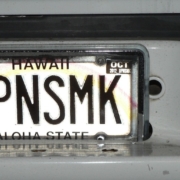Six Types of Humor to Enhance Persuasion
Humor takes many forms. In fact, most people never stop to analyze the type of humor they are using; they just try to be funny. For the purposes of persuasion, it is imperative to break down the six key types of humor that will make being funny worth your while: anecdotal, self-deprecating, epigrammatic, irony, satire and deadpan.
1. Anecdotal
These are strictly personal stories and incidents that don’t require validation, empirical study or statistics. People love stories, and anecdotes are timely, relevant and compelling stories. Here’s a quick example:
A Harley-Davidson salesperson was using his personal iPhone to show a prospective customer the new motorcycle’s communication system. While demonstrating the various features, which included a text-to-speech component, the salesperson received a text message from his wife, which the sophisticated new system immediately started to translate — complete with intimate details of her plans for their upcoming date night!
After scrambling to mute his phone, the salesperson sheepishly apologized to the customer, who enthusiastically inquired if this was standard on all models.
Lesson: You never know who is listening.
Tips for use:
- Make anecdotes short.
- Make them real.
- Make a point.
2. Self-deprecating
This type of humor usually involves an anecdote in which you make fun of yourself. It proves you don’t take yourself too seriously and are no more superior simply because you are in the persuasive power position. Alan Weiss often says, “I’m always surprised by how stupid I was two weeks ago.” Oscar Wilde liked to say, “I’m so clever sometimes I don’t understand a word I’ve written.” (Compare those comments to sarcasm, such as author James Thurber’s line, “If you ever got good, you’d be mediocre.”)
Tips for use:
- If you’re known as the hard-charging guy in the office, self-deprecation would generate some laughs; it would stand in stark contrast to the traditional impression people have of you.
- A distinguishing physical feature, such as being tall or bald, can be used to humorous effect and make you instantly more approachable and agreeable (especially when you make a mistake): “My head gets cold a lot during the winter, and that sometimes leads to brain freezes.”
- Use a known personality trait. If, for example, you’re considered an aggressive salesperson in your organization, take advantage of that: “I’m not one to go after new business, but I think this guy is a piping-hot prospect.”
As with all humor, the more spontaneous your self-deprecation, the better. And when in doubt, it’s always more appropriate to poke fun at yourself than it is to use humor at someone else’s expense.
3. Epigrammatic
An epigram is a brief, memorable, insightful statement.
“I’m not young enough to know everything.”
— Oscar Wilde
“Put your hand on a hot stove for a minute, and it seems like an hour. Sit with a pretty girl for an hour, and it seems like a minute. THAT’S relativity!”
— Albert Einstein
“Make crime pay. Become a lawyer.”
— Will Rogers
Tips for use:
- Keep a few epigrammatic statements in your persuasive pocket and pull one of them out when the situation calls for an icebreaker, relief from an awkward moment or simply a lightening of the mood.
- Use existing epigrammatic statements as a model to develop some of your own: “Some companies run out of ideas before they run out of your money.”
4. Irony
Irony represents an incongruity between what is expected and what occurs — such as an escalator leading to a fitness center, a typo on a billboard promoting literacy or an ad railing against teenage drinking alongside a beer ad.
Tips for use:
- Draw parallels: “That kind of awkward situation would be like the local firehouse burning down.
- In presentations, use photographs to show the oxymoronic humor of your statement through juxtaposition: A photo of healthcare professionals congregating outside for a cigarette smoking break.
5. Satire
This is humor that spotlights the shortcomings of a society, a company, government or people. Satire is a rough form of humor (so use it sparingly), and it can take multiple forms:
- Sarcasm: “You mean to tell me that the web consultants haven’t finished the wireframes yet? I’m shocked.”
- Parody: When giving a presentation, include a PowerPoint slide detailing the evils of PowerPoint presentations.
- Hyperbole, an exaggeration that can be used to make a boring story more exciting: “This graph illustrates that sometimes our users flock to our content marketing like we’re Starbucks giving out free lattes.”
Tip for use:
- As when using other types of humor, make sure you know your audience well. If even one person misinterprets your wisecracks for poor attitude or insubordination, you might need to engage in damage control. Don’t use satire to swat flies.
6. Deadpan
Also known as dry humor, deadpan humor consists of a funny statement subtly delivered in a casual or insincere tone. Steven Wright was the master of this, and some of his lines are applicable in persuasion situations: “When everything is coming your way, you’re in the wrong lane” and “Change is inevitable … except from vending machines.”
Tips for use:
- When in a meeting discussing how to woo a new international client, borrow a line from early 19th-century writer Dorothy Parker and say: “I’ve heard he can speak five different languages and knows how to say ‘yes’ in all of them.”
- When Leonard from The Big Bang Theory said “Guess what?” to Sheldon, the brainiac replied thusly: “You went out into the hallway, stumbled into an inter-dimensional portal, which brought you 5,000 years into the future, where you took advantage of the advanced technology to build a time machine, and now you’re back to bring us all with you to the year 7010, where we will be transported to work at the thinkatorium by telepathically controlled dolphins.” Saying something like that should liven up the office environment for a minute or two. Just make sure that your deadpan humor won’t go over the heads of your targets. Otherwise you’ll risk losing credibility. Not everyone watches The Big Bang Theory.












Leave a Reply
Want to join the discussion?Feel free to contribute!